Jews in Italy have strong bicultural roots which go back even before the birth of Jesus, when the Jews already had an alliance with the Roman Empire. It was not until the Romans destroyed the Second Temple in Jerusalem that the Jewish/Roman alliance was broken and Jews were forced into slavery. About ten thousand Jews were transported to Rome to be used as slaves to help build the Coliseum. This image of history was frozen in time and will be remembered forever thanks to the Arch of Titus, where the Roman victory over the Jews is sculpted into the stone.
Throughout history the situation of the Jews depended greatly on who was in control of either the Roman Empire or the Church. However, the tolerance for religious freedom started to take a turn for the worse in 380 CE when the Edict of Tessa Lonica of Teodosia was put into effect. The edict recognized Christianity as the official religion of the Roman Empire, with very little tolerance for Jews and other religious cults. By the second half of the 16th century the church instituted the Papal Bull: All Jews were to be enclosed in ghettos, each community could have only one synagogue, all commercial and civil rights were taken away, and all Jews had to wear a contrassegno (identification).
It was not until the arrival of Napoleon that the doors of the ghettos were torn down. With the exception of the Orthodox Jews, Napoleon was seen as a type of savior. He gave Jews their civil and commercial rights and for the first time in history they were regarded as first-class citizens (except those who lived in the Papal State and Tuscany). However, with Napoleon’s defeat, they were thrown back into the ghettos and once again their rights were taken away.
In 1848, the Italian states were unified as one Italy under the House of Savoy. The new government freed the Jews and gave them their civil and political equality. By 1922 Jewish assimilation was almost complete, at the time the Fascists came to power. Initially, many Jews supported them, even participating in the March on Rome. However, in 1929 Mussolini passed the Falco Laws which banned freedom of religion. In 1938 Mussolini produced his Manifesto of Italian Racism and declared the Italians to be part of the “pure race” along with the Aryans. Jews were expelled from all public services, such as the Army and also all public schools.
In 1940 Mussolini joined the war in alliance with Hitler and ordered the Fascist army to ransack the ghettos. The confinements and deportations began in 1943. More Jews fled hoping to find shelter in the Alps, convents, and monasteries. Others joined the Partisans, who opposed the Fascist regime.
After World War II, with Mussolini’s defeat and the defeat of the Fascists, Jews were reinstated as full-fledged citizens. Many survivors left for the newly formed nation of Israel while others decided to stay and reconstruct their communities. Today there are an estimated 40,000 Jews in the entire Italy.
Jewish Venice
The word “ghetto,” soon used throughout Europe for isolated minority groups, originated in Venice: ghetto is old Venetian dialect for “foundry.” In 1516, 700 Jews were forced to move to a then-remote northwestern corner of Venice, to an abandoned site of a 14th-century foundry. At night, all routes leading in an out of the Ghetto were guarded and sealed by locked gates. The Jews were only allowed to hold certain professions: they could own pawn shops, trade textiles and practice medicine.
Whenever Jews left the Ghetto area, the men had to wear a yellow circle stitched on the left shoulder, while the women wore a yellow scarf. The first Jews to settle in the ghetto of Venice were central European Ashkenazim, who constructed two synagogues: in 1528, the Scola Grande Tedesca, and later in 1532, the Scola Canton. In an area where space was limited, the Jews had no other choice but to build their synagogues in the attic stories of buildings as Jewish law forbids that anything should come between the synagogue and the sky.
The next group of Jews to arrive in Venice were the Levantine, who were granted their neighbourhood in 1541, as part of an expansion of the Jewish ghetto. This area today, is known as the “new ghetto.” The Levantine Jews were fortunate enough to build their synagogue on the ground. Mixed in with the Levantine and Ashkenazim Jews, were Italian Jews who migrated north to Venice from the central and southern parts of the peninsula.
In 1575, the Italians built their own synagogue, the Scola Italiana, which was built on top of apartments. The structure features a cupola which is barely visible from the square below. The Spanish synagogue, also built in the 16th century, offers services on Shabbat and holidays. Around 1650, the ghetto’s population reached a peak of 4,000 inhabitants. A feat hard to believe as you wander around today, an area no bigger than two and a half city blocks.
With the arrival of Napoléon in 1797, the ghetto was disbanded and Jews were free to move wherever they liked, but the Jews realized full freedom only in the late 19th century with the founding of the Italian State.
Before World War Two there were still 1,300 Jews living in the Ghetto. Of the 289 who were deported, only seven returned. Today, along with neighboring Mestre on the mainland, Venice boasts a population of 500 Jews. Even though the ghetto continues to be the center of community activities for the Jewish community, very few Jews continue to live in the Ghetto.
With the opening twelve years ago of Chabad of Venice’s Rabbinical Yeshiva, an active daily Jewish life is once again visible in this historic area, and three prayer services are offered daily. At almost any given time of day, a Jewish tourist can proudly see young, vibrant yeshiva students in the ghetto, helping visitors and neighbors alike.
Today, the historic ghetto remains the center of Venice’s ever-diminishing Jewish community; anywhere from 500 to 2,000 Jews now live in all of Venice. European Jewish Heritage Tours’s local expert guides will show you this atypical district, where Venetian laws forbade the building of separate synagogues. You will not only enjoy a tour of three of the five synagogues but you will be able to admire the Holocaust memorials designed by sculptor Arbit Blatas.
After lunch in Venice’s first kosher restaurant, Gam Gam, you will travel with our guide by vaporetto to the Lido for a private visit Venice’s two Jewish cemeteries. The first of these was founded in the 1380s and contains a multitude of carved tombstones, some with vivid symbols representing family names or cabalistic designs from Jewish iconography. You will also visit the newer Jewish cemetery –still in use – with its fascinating collection of historic tombstones and immense 19th and 20th century mausolea.
Note: We also provide Jewish heritage tours in St. Marks Cathedral, showing how Jewish Old Testament figures and a Jewish star figure prominently in the monument’s architectural decoration. In addition to standard tourist fare, we invite you to discover with our guides, the private museum of the late, great Peggy Guggenheim—who collected Dalis, Miros and Pollocks before they became famous and fashionable. She left her palazzo and collection to the city of Venice, and it is one of the city’s must-see museums.
We can also arrange for you to stay at a kosher residential hotel in the Ghetto—which offers our clients preferential prices, as well as organize kosher picnics and gourmet dinners at one of the finest kosher restaurants in Italy.
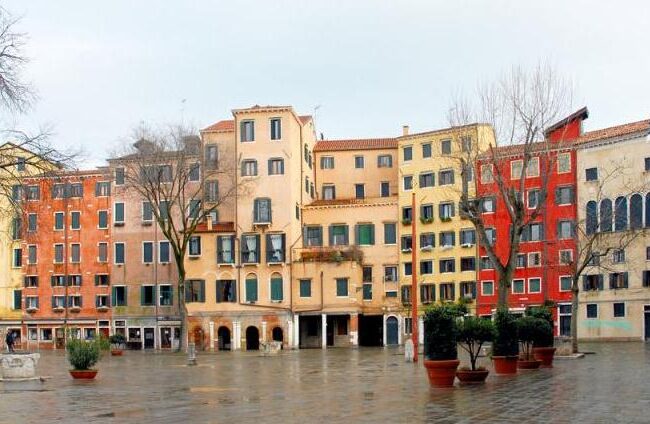
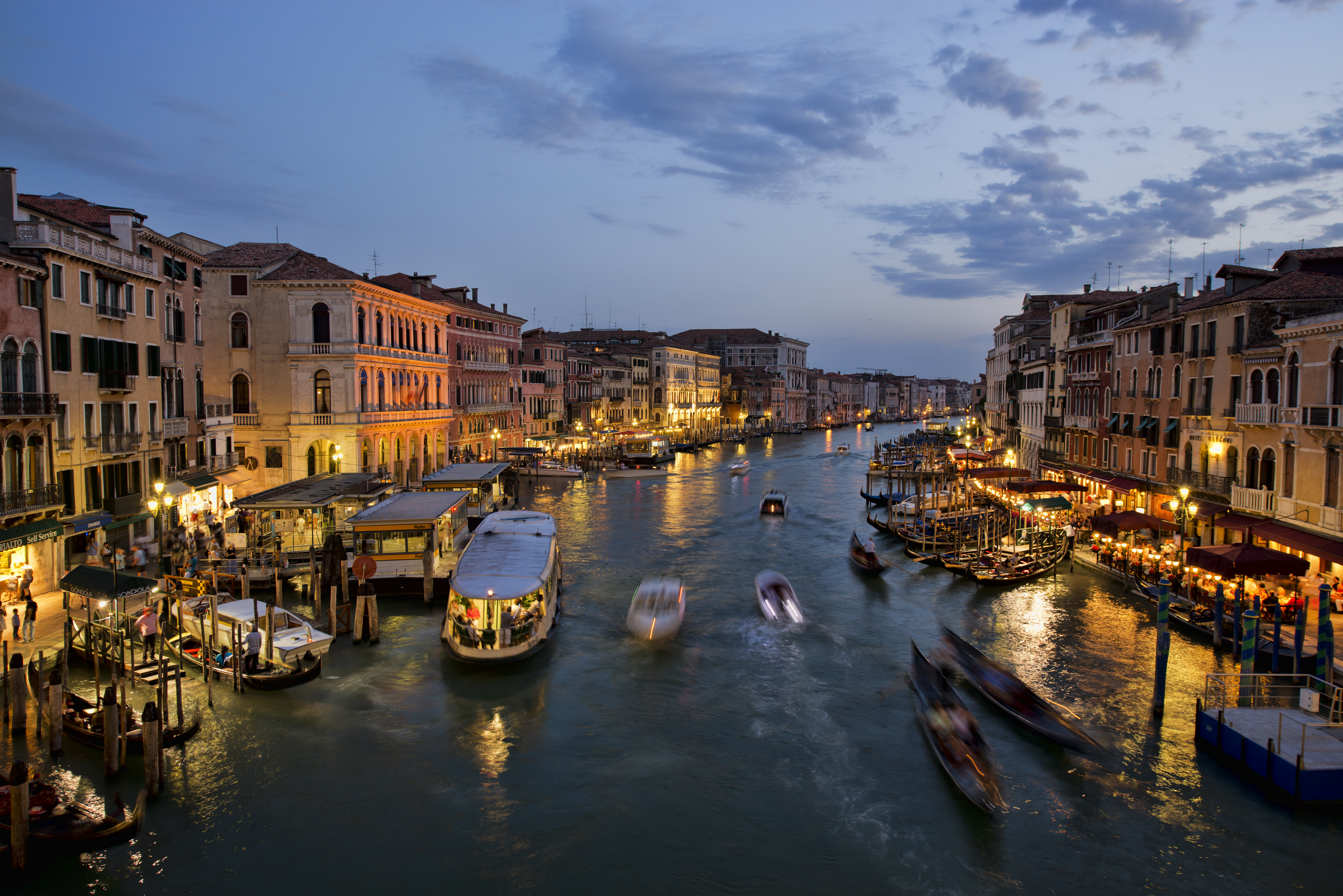
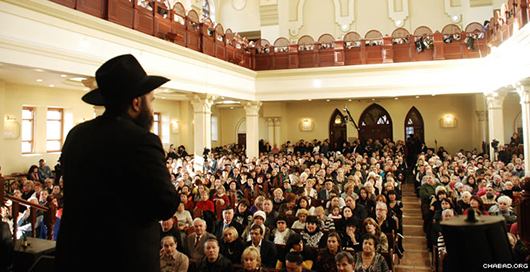
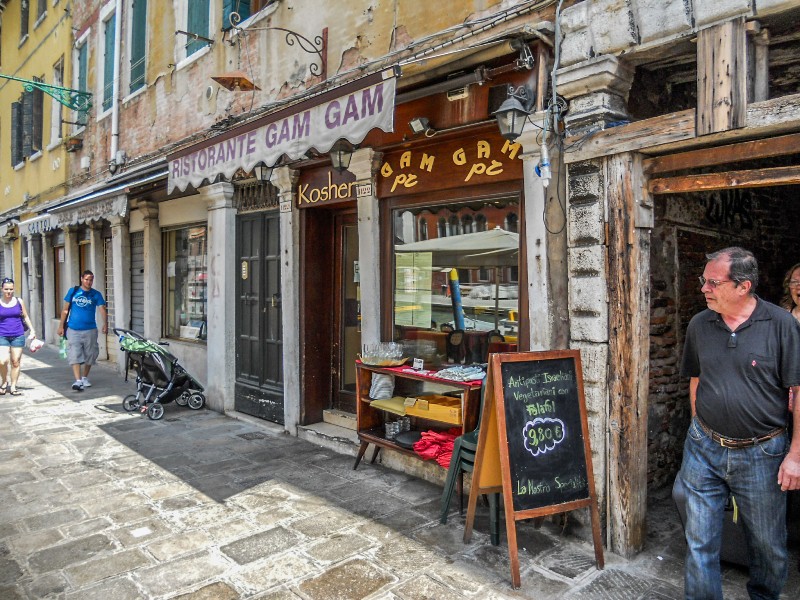
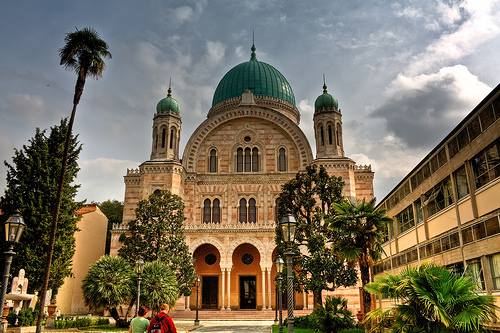
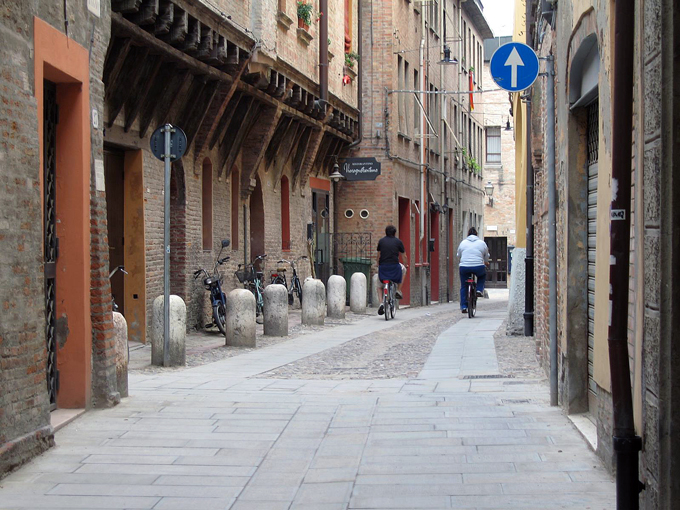
Jewish Florence and Ferrara
Jews have left indelible traces in Ferrara‘s local arts and literature. The novelist Giorgio Bassani lived in Ferrara where he was inspired to write The Garden of the Finzi-Continis based on an actual family’s tragic destiny. Ferrara is rich with a Jewish history that dates back to the middle ages. Visitors can appreciate the countless landmarks that pay tribute to this heritage firsthand. The Jewish Ghetto area has remained intact both in look and layout throughout various restorations and is now a pedestrian area complete with historical markers and boutiques. The area where the Jewish population once lived has never lost the commercial character it had since its inception and remains a pleasant place explore.
European Jewish Heritage Tours’ local guide will show you the Historic Community Building in Ferrara that was built as early as 1481. The building currently houses synagogues, community offices, a prayer room, and a museum which narrates the cycle of life, houses historically significant objects like the keys to the ghetto, as well as sacred objects. Most importantly, the museum tells the story of the community from the establishment of the ghetto, through the French occupation, to the unification of Italy, and celebrates the Jewish contribution to literature. The city’s moving Addizione Erculea Jewish cemetery goes back to the 15th century and is the final resting place for writer Giorgio Bassani.
The history of the Jews of Florence dates back to the 15th century, the Golden Age of the Renaissance. The Medici family welcomed Jews to Florence and extended privileges and freedoms unavailable to them elsewhere in Europe. During your tour, you will visit the former Jewish ghetto, the 19th century Moorish–style Tempio Israelitico, and the Jewish Museum.
You will also have a chance to discover the medieval Basilica di Santa Croce, famous for its Giotto frescoes and the tombs of Michelangelo, Dante and Galileo. A Jewish architect designed the church’s 19th century neo-Gothic facade, working a prominent Star of David into the composition. There will also be time to tour the Accademia and discover the most famous statue of a Jewish Biblical figure: Michelangelo’s David.
Jewish Rome
Italy is considered the oldest Jewish community in the Western world, with the Jewish settlement in Rome, dating back to 161 B.C.E.
With European Jewish Heritage Tours, our guides will show you the former Medieval Jewish Ghetto, the Arch of Titus built by the Roman commander to commemorate his Judean victory in 70 C.E. and the city’s Great Synagogue where the “Minhag Romi” (Italian liturgy of Rome, the oldest European liturgy) is still celebrated.
Inside the synagogue, you will discover the Jewish Museum, which the rich history and heritage of the resilient community since the Roman Empire.
A guided tour in this unusual museum demonstrates how despite the assiduous attempts made by the Church to convert them, Rome’s Jews spent their precious funds on ritual objects to glorify their faith. Among the treasures on view are silver-covered prayer books from the Renaissance, antique Torah curtains and scroll covers, and elaborate rimmonim.
After a delicious kosher lunch in a nearby restaurant, famed for its Italian-Jewish cuisine, European Jewish Heritage Tours will arrange for you to visit Ostia Antica, one of the most beautiful and intriguing sites near the capital. Here you will discover the life of middle-class Jews of the ancient world, who once thrived here as tailors, butchers, blacksmiths and actors.
The synagogue in Ostia is one of the oldest in the world, dating back to the 4th century C.E. and its nearby kitchen, dining room and stone benches, once slept on by traveling Jewish merchants, are some of the unique facets of this tour.



Kosher Ship to Shore Tours
If you want to enjoy private tours of Italy during your cruise, then don’t hesitate to contact European Jewish Heritage Tours to have everything custom arranged according to your kosher needs. With us, you can visit Livorno, Florence and Pisa among countless other sites. Experience the Italian countryside, see the leaning Tower of Pisa and explore this extraordinary country and its historic cities with a knowledgeable, friendly guide personally chosen for your tour by Rachel Kaplan and European Jewish Heritage Tours. We arrange private transportation pickup to and from the cruise ship, Jewish and secular tour in the regions you will be visiting, as well as any kosher meals or religious services you may require.

